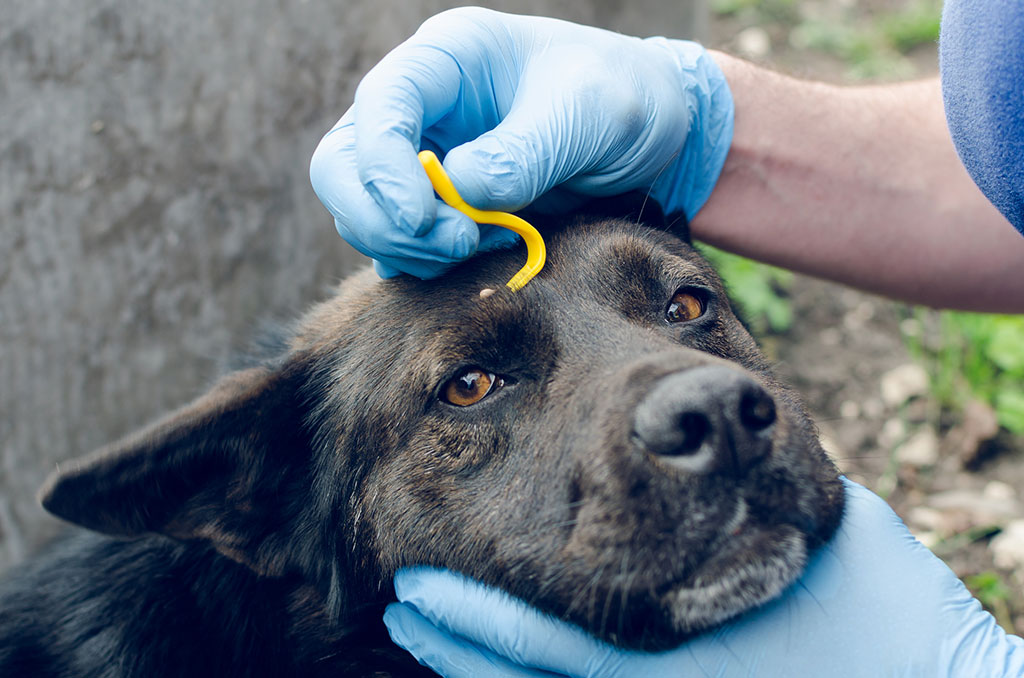Ticks are small insects that live all over Canada and the US, and are becoming more common in southwestern Ontario. Ticks feed off the blood of animals and humans and can spread diseases like Lyme disease and Rocky Mountain spotted fever, among others.
Lyme disease can be spread to pets and humans, and can lead to kidney disease and death. Symptoms like lameness (inability to walk), reluctance to move and fatigue can be signs of Lyme disease, but symptoms can come and go, can vary from mild to severe, and can mimic other diseases.
Ticks are being brought into more urban areas by wild animals through migration, like Canada Geese and other migrating birds and animals. It’s important to check your pets for ticks regularly. Here are some tips:
- When ticks are removed, the head needs to be removed as well as the body. Your vet can remove ticks most effectively.
- Ticks are easiest to spot in short-haired animals, but you can usually feel them by running your hands through your pet’s fur.
- Ticks are dark in colour and large enough to see easily, and they don’t move much once they’ve found a place on your pet to feed. They then grow as they ingest blood and become engorged.
- Ticks are drawn to small, dark places on the body, so it’s important to be thorough when checking your pet for ticks.
- When checking your pet, feel for something the size of a small pea.
- You can use your hands, or a brush or flea comb. Just be careful if you snag something – if it’s a tick, you don’t want to pull out just the body.
- Check your pet’s skin for red or irritated areas, or signs of excessive scratching or licking in particular areas.
- If your dog is constantly shaking his or her head, it may be a sign that a tick has attached itself to the inside of the ear. If you can’t see anything in the outer ear canal, take your dog to the vet so they can inspect it more closely and safely.
- Once a tick has been removed, you’ll need to keep the area clean with disinfectant, and your vet may prescribe an antibiotic ointment.
There’s no way to tell if a tick is infected with Lyme disease or other diseases, and it only takes one infected tick to infect your pet. Lyme disease may not be obvious until it’s too late, so it’s important to stay vigilant.

